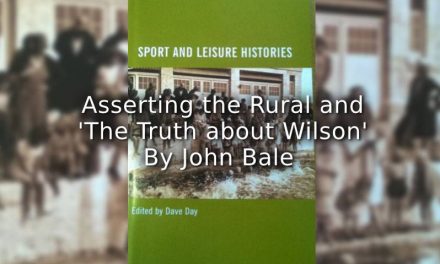Early records suggest that people have enjoyed booting a ball around for hundreds of years. In fact the game can be traced back as far as our medieval ancestors, when young men were said to compete in chaotic contests, hoofing an inflated pig’s bladder through village streets, over fields, hedges and streams.
- Mob Football’ a variety of medieval football.
In the beginning the global game, as we now know it, was first organised around 1857, with England recognised as the source of the world’s oldest football clubs.
In 1855, Nathaniel Creswick and William Prest, two members of a Sheffield cricket club, habitually arranged informal kick-abouts on behalf of the club’s more athletic members. This innovative initiative eventually led the resourceful pair to create the Sheffield FC, which lays claim to being the oldest association football club in the world.
The inaugural meeting of the club was held on the 24 October, 1857 at Parkfield House in Highfield, Derbyshire, following which the pioneering pair would later develop the Sheffield Rules, the first set of rules and social values for the game. And it wasn’t until 1878 that the club first adopted the rules created by the Football Association in London in 1863.
Sheffield FC played its early games at the East Bank ground. It now plays its matches at the Coach and Horses stadium in Dronfield, which enjoys a crowd capacity of 2,089, including seating for 250.
The club’s finest hour came in 1904 when it won the FA Amateur Cup, defeating Ealing 3-1 at the Valley Parade ground in Bradford. A decade later in 2004 the club was awarded the FIFA Order of Merit, an award made to only one other club, the celebrated Real Madrid. Three years later, to commemorate its 150th anniversary, Sheffield FC was inducted into the English Football Hall of Fame.
In 2010 it established the Sheffield FC Foundation, which assiduously promotes the game as a community sport, and in so doing continues to preserve the club’s heritage and its sporting values.
Throughout its history Sheffield FC has always played football at amateur level. For when the first English professional football league was founded in 1885, the club simply wasn’t strong enough to compete against professional teams and firmly refused to make payments to its players. Sheffield FC currently competes in the Northern Premier League Division One East, which covers all the North of England, and some parts of the Midlands.
As more and more clubs were being formed towards the end of the 1860s, and following the development of the rules of the game as established by the FA in 1863, Scotland continued to mature and become one of the earliest of modern foot-balling nations,.
It is alleged an annual football match was being held in Scotland in the 1790s, and researchers claim John Hope, a 17 year-old law student, founded a ‘Foot Ball Club’ in Edinburgh as early as 1824. Asserting it precedes the formation of the Sheffield FC by three decades. However, it is said the game played was but a crude version of that we know today, in which players were routinely drawn from the city’s Georgian and Victorian professional classes, and were permitted to push and shove one another in games which routinely included as many players as might happen to show up.
- Queen’s Park
Founded in 1867, Queen’s Park FC is unquestionably Scotland’s first association football club. The Glasgow club’s influence over the initial rules of the game, the formation of the Scottish FA in 1892, and its management of the early Scottish national team, conclusively determines its status as the country’s primary club.
In November 1872, Scotland faced England in an international match in front of a crowd of 4,000 spectators. All eleven players in the Scotland team were from the Queen’s Park club, and turned out wearing blue jerseys, the colours of Queen’s Park.
Currently Queen’s Park FC is the only fully amateur club in the Scottish Professional Football League; its status reflected by its motto, ‘Ludere Causa Ludendi’ – ‘to play for the sake of playing’. With a crowd capacity of 51,866, its home venue Hampden Park is shared with the national team.
- Sheffield FC
- Queens Park FC
- Notts County FC
Founded in 1862, Notts. County FC is acknowledged as the oldest professional association football club in the world. One of the twelve founder members of the Football League in 1888 it currently competes in the fourth tier of English football, League Two of the Football League.
During its first fifty years, the club played its home fixtures at several different venues, initially at Park Hollow in the grounds of Nottingham Castle. In December 1864, when the decision was taken to play matches against opposition from further afield, the club decided it needed to find a larger venue. And in 1883, the club settled at the famous Trent Bridge cricket ground. However, when it was in use for cricket, it was compelled to play its matches elsewhere. The club moved to its current home ground at Meadow Lane in 1910, located just across the River Trent, opposite the City Ground, home of their time-honoured rivals Nottingham Forest, where they have remained ever since.
1862–1863 Park Hollow, The Park Estate
1863–1873 Meadows Cricket Ground
1873–1883 Trent Bridge Cricket Ground, major games only
1877–1878 Beeston Cricket Ground
1880–1883 Castle Cricket Ground
1883 -1910 Trent Bridge Cricket Ground
1910 Meadow Lane
The club’s first international player was full-back Ernest Greenhalgh [1849 -1922], who represented England in the very first international match played against Scotland in November 1872. Born in Mansfield, Greenhalgh made over 147 appearances for Notts County from 1869 to 1883, and became club captain in 1872. Following his retirement Greenhalgh continued to play an important role in the development of football in the county. He founded Greenhalgh’s FC in Mansfield, and was the owner of Field Mill, the home of Mansfield Mechanics FC until 1916, when it became the home ground of Mansfield Town.
Numbered amongst the club’s long and memorable history is its only FA Cup Final victory against Bolton Wanderers 4-1 at Goodison Park in 1894, when it became the first team from outside the top flight to win the coveted trophy. Avenging the result of the club’s first FA Cup Final appearance three years earlier, when it was defeated by Blackburn Rovers 3-1 at The Oval, despite having thrashed the same side 7–1 a week earlier in the league.
- Notts. County FC. FA Cup winners in 1894
Nicknamed the ‘Magpies’, often shortened to the ‘Pies’, Notts. County has traditionally always played in black and white striped shirts. In its formative years the world-famous Italian club Juventus FC originally played its games wearing pink shirts and sporting a black neck-tie. However, continuous washing caused the shirts to fade, and as a consequence it decided to replace them with something more suitable. By chance a member of the Juventus team had a friend in Nottingham, who was a keen supporter of Notts. County. Following brief discussions in 1903 arrangements were for the Nottingham club to ship out a new strip to Turin, identical to that worn by the ‘Magpies’. Suggesting the colours as aggressive and powerful, Juventus has worn the distinctive black and white home kit ever since.
To commemorate the opening of its Allianz stadium in 2011, Juventus FC invited Notts. County to play an exhibition match which resulted in a 1–1 draw.
Article © Roy Case

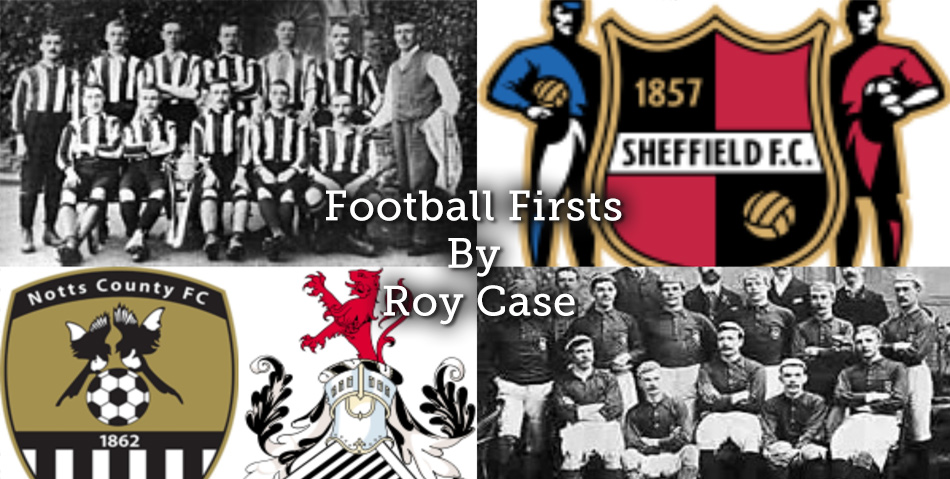
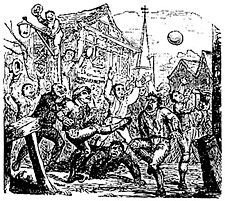
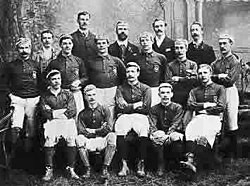
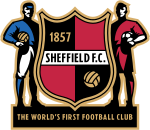
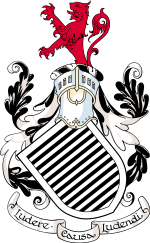
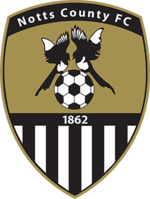
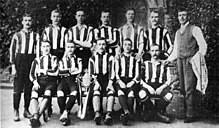


![“And then we were boycotted” <br> New discoveries about the birth of women’s football in Italy [1933] <br> Part 6](https://www.playingpasts.co.uk/wp-content/uploads/2020/04/PP-banner-maker-4-440x264.jpg)
